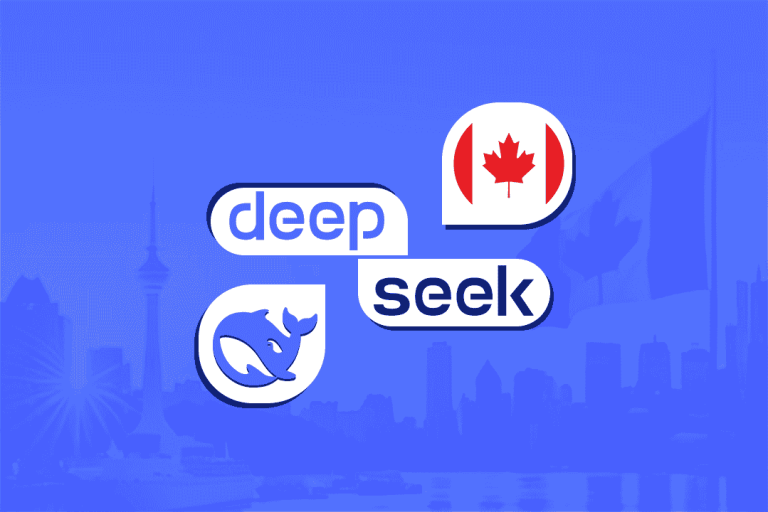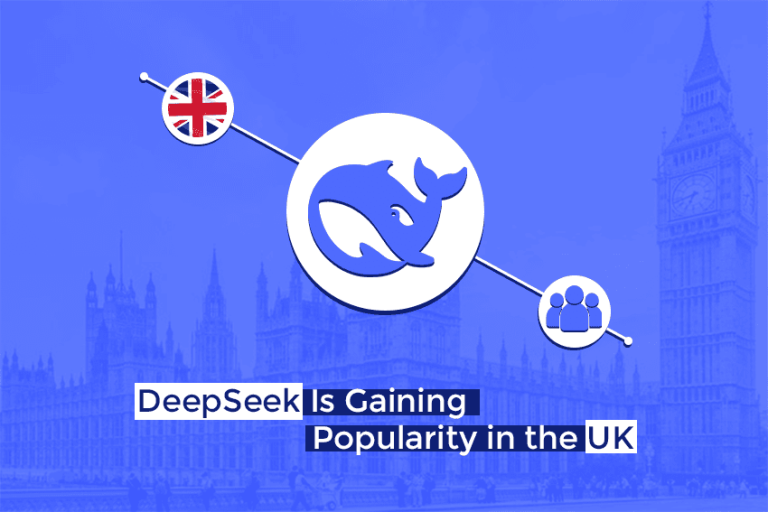Chinese AI model DeepSeek has rapidly gained international traction, with major tech companies and cloud platforms integrating its services.
In February 2025, a report noted that 20 global companies officially announced support for DeepSeek’s models, including U.S. giants NVIDIA, AMD, Microsoft, Amazon Web Services (AWS), and Intel, alongside Chinese cloud leaders like Huawei Cloud, Tencent Cloud, Alibaba Cloud, Baidu AI Cloud, and more.
This broad industry backing signals a new wave of AI adoption, as DeepSeek’s technology is being woven into the fabric of cloud computing and hardware ecosystems worldwide
Big Tech Integrations Across Clouds and Hardware
Several examples highlight how thoroughly DeepSeek has been embraced across platforms:
- Amazon AWS: In early 2025, AWS made DeepSeek-R1 available through its Amazon Bedrock cloud service and SageMaker JumpStart, including distilled (smaller) versions of the model for cost-efficient deployment. This means AWS customers can tap DeepSeek’s powerful language model via a simple API, or fine-tune it in SageMaker, without needing to manage complex infrastructure. Notably, AWS even enables DeepSeek-R1 on specialized AI chips like AWS Trainium and Inferentia, allowing the model to run with optimal price-performance on AWS EC2 instances. The integration into Bedrock and support for AWS’s custom silicon demonstrate how cloud providers are optimizing their platforms for DeepSeek.
- Microsoft Azure: Microsoft likewise integrated DeepSeek into its offerings. By late January 2025, DeepSeek-R1 was made available in Microsoft’s Azure AI Foundry and on GitHub, with built-in tools for automated red-teaming and content safety. Microsoft even announced it would release “distilled” variants of R1 optimized for Windows devices (using NPUs on Snapdragon and later Intel chips) so that lighter versions of DeepSeek can run locally on PCs. This move shows Microsoft’s strategy of embracing DeepSeek’s model alongside its own, ensuring customers have access to this Chinese-developed AI via Azure while preparing to deploy it on future AI-accelerated PCs.
- NVIDIA: The leading AI chipmaker has incorporated DeepSeek into its ecosystem by hosting DeepSeek-R1 as an NVIDIA NIM (NVIDIA Inference Microservice) for enterprise deployment. As of Jan 30, 2025, the full 671B-parameter R1 model was packaged as a microservice on NVIDIA’s platform, capable of delivering extremely high throughput (up to ~3,872 tokens/second on an 8×H200 GPU server). This allows developers to easily deploy DeepSeek-R1 on NVIDIA hardware with industry-standard APIs, and even customize it using NVIDIA’s AI Foundry and NeMo tools. NVIDIA’s support underscores that even established AI infrastructure providers see value in offering DeepSeek as a ready-to-use model for their customers.
- Other Platforms: DeepSeek’s integration extends further. AMD has reportedly optimized certain GPU systems (like its MI300X accelerators) for DeepSeek’s models, and Intel has enabled DeepSeek to run on AI PCs with its processors. Chinese AI startups and cloud services (e.g. MetaX, Iluvatar, Moore Threads, Biren) are also including DeepSeek models in their offerings. For example, Tencent Cloud and Alibaba Cloud each announced one-click deployment of DeepSeek models on their AI platforms, reflecting how Chinese cloud providers rapidly adopted DeepSeek as a flagship model in their catalogs.
This broad integration means users can access DeepSeek virtually anywhere – from cloud APIs and enterprise servers to personal devices – marking an unprecedented distribution for a new AI model.
DeepSeek’s availability on multiple major clouds lowers the barrier for developers and enterprises globally to experiment with it, without needing dedicated infrastructure.
Why DeepSeek Is Attracting Global Platforms
The enthusiasm from big tech companies stems largely from DeepSeek’s technical and cost advantages.
DeepSeek’s models, such as the R1 series, were built with efficiency in mind – using innovative training techniques and model compression (distillation) to achieve strong reasoning performance at a fraction of the usual computational cost.
According to TrendForce analysts, DeepSeek addresses the AI industry’s cost challenges by compressing large models (improving inference speed and reducing hardware needs) and optimizing for existing chips (even slightly older or scaled-down GPUs), all while maintaining high performance.
This means cloud providers can offer powerful AI services to customers with much lower operating costs.
DeepSeek’s own team claims their model is 90–95% cheaper to run than comparable models, which is a compelling figure for any service provider or enterprise user.
Crucially, DeepSeek’s cost-efficiency does not come at the expense of capability.
R1 is known for its strong logical reasoning, math, and coding skills, rivaling top Western models in quality.
This combination of high performance with low running cost makes it a disruptive offering. For cloud platforms like AWS, Azure, and Alibaba, integrating DeepSeek allows them to pass these benefits to their customers – enabling AI applications that are both powerful and more affordable.
As a result, each platform is touting DeepSeek as a new option for developers who need advanced AI without breaking the bank.
For instance, AWS explicitly highlights DeepSeek-R1’s “high-performance, cost-efficient” nature and encourages customers to build generative AI solutions on it with minimal investment.
The rapid, widespread adoption of DeepSeek across global tech companies is a strong indicator of its commercial potential.
By being available on all major clouds and supported by leading chipmakers, DeepSeek has positioned itself as a truly universal AI model. Users can tap into DeepSeek via whatever platform or hardware they prefer, which greatly broadens its reach. This ubiquity, in turn, fuels a virtuous cycle: more usage yields more community improvements and trust, accelerating innovation around the model.
Industry observers have noted that DeepSeek’s deployment success is providing enterprises with “low-cost, high-performance AI solutions” that unlock new applications.
In short, DeepSeek’s global integration is breaking down barriers to AI adoption, and its partnership with the world’s tech giants suggests it will play a pivotal role in the next phase of AI-driven transformation.
(Curious about DeepSeek’s next steps? Read our deep dive on the upcoming R2 model to learn what improvements are on the horizon.)



